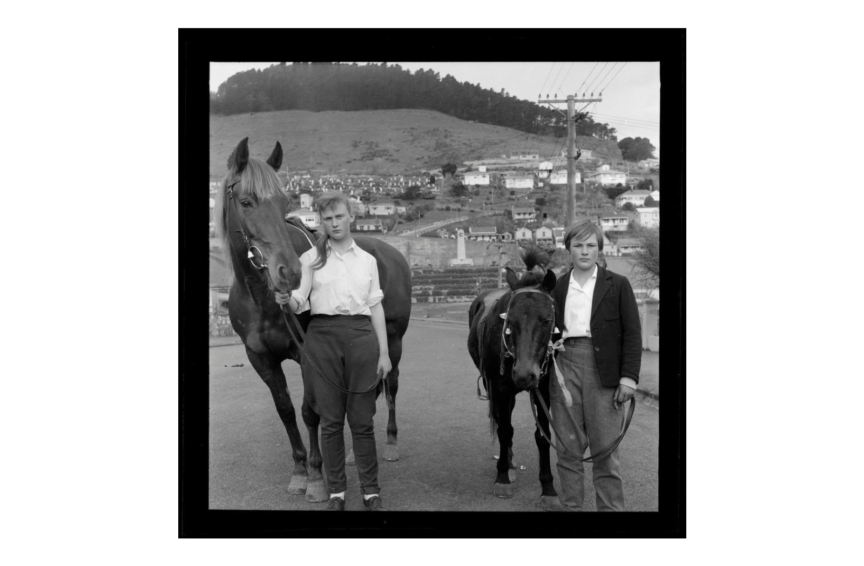PO Box 95
Lyttelton 8841
Te Ūaka recognises Te Hapū o Ngāti Wheke as Mana Whenua and Mana Moana for Te Whakaraupō / Lyttelton Harbour.
John Grubb, the accidental arrival, and Grubb Cottage
By Liz Grant
John Grubb, who arrived in Ōhinehou Lyttelton in 1848 and went on to be a true stalwart of the community, had no plans to settle here when he left his homeland of Scotland the previous year. Several generations later, his descendants look on his legacy with great pride. John and his wife Mary were the great great great great grandparents of Abbie Montgomery, pictured here with her father and daughter. Her links with Lyttelton are even stronger:
“My maternal great great great great grandfather, Mathew Lee Joyce also arrived in Lyttelton before 1850 and I have no doubt John Grubb and Mathew Joyce would have crossed paths all those years ago”.
Abbie says it is very special to her that she has been able to trace these family links, and to pass their stories on to future generations. Michael Williams, Chair of the Grubb Cottage Heritage Trust, says that since 2007, 17,000 people have visited the cottage, including many descendants, some coming from as far away as Scotland.
John Grubb was born in 1817 in Tayport, in Fife, Scotland. As a young man he was apprenticed to the shipbuilding trade and in 1847 was a ship’s carpenter on the barque General Palmer sailing between Melbourne and London. Badly damaged by storms, the ship made for Wellington for repairs but was in such a poor state that it was condemned, stranding John Grubb literally on the other side of the world from home.
These were the days when the Canterbury Association was preparing for the arrival of the Association settlers. Grubb was contracted by Captain Joseph Thomas, the Association’s surveyor, to help build a jetty in Cavendish (later Erskine) Bay for the Association’s ships.
Many settlers bought land in England off plans the Canterbury Association had prepared for prospective emigrants. John was the first person to buy land having already arrived in New Zealand. On 1 July 1851, he bought Town Section 45, at what is now 62 London Street, Lyttelton, for £23. The cottage he built was the first permanent residence in Lyttelton and is one of the oldest surviving houses from that era of European settlement in Canterbury.
Grubb wrote to Mary, who was living back in Dundee, that he was well paid and “I like the place well”. His plan was to establish a shipbuilding business in Lyttelton. He arranged for Mary and their three daughters to sail to New Zealand on the first Canterbury Association ship, the Charlotte Jane. Mary was to bring more tools including crosscut saws, an axe, an adze, steel chisels, a brace and bits, and a plane.
By the time the family arrived on 16 December 1850, John had built a V-hut for them all to live in. That tight fit got even tighter with the arrival during the following year of their first son, also named John. Fortunately, John senior had a plan. On the London Street section he built a simple cottage using rimu and kahikatea for the weatherboard cladding, and kauri for the floor. It had a kitchen and living room downstairs and two bedrooms upstairs, accommodated by the high-pitched roof. Possibly pretty desperate to leave the V-Hut, the family moved into the cottage even before the doors and windows had been fitted. Their first kitchen table was made of boards laid across two biscuit casks from the Charlotte Jane.
Between 1853 and 1861 John and Mary had two more sons and four daughters. John was also busy with community projects and was a foundation member of the Canterbury Kilwinning Masonic Lodge No 23. With now 10 children, the original cottage needed to be expanded. Probably between 1864 and 1868, a new two-storey addition was built at the front. Despite additions and alterations, Grubb Cottage is in a relatively original condition, even down to the light fittings. Mary Grubb, died in Lyttelton in 1886, John died in 1898, and is buried in the Lyttelton Anglican cemetery on Canterbury Street.
The Grubb family continued to own and live in the cottage until it was sold in 1961. It changed hands several times before the Christchurch City Council agreed to buy it on 30 March 2006. In recognition of its architectural significance, it had been registered in 1996 as a Category II Historic Place by the New Zealand Historic Places Trust (now Heritage New Zealand Pouhere Taonga). The Grubb Cottage Heritage Trust was established in 2007, taking on responsibility for care and conservation of the cottage.
Grubb Cottage is open to visitors, free of charge, on Saturday mornings 10.30 am – 12.30 pm, or by request.
Find out more about the archaeological finds uncovered when stabilising and conservation work were done after the Canterbury Earthquake Sequence, which did surprisingly little damage to the cottage:
https://ccc.govt.nz/culture-and-community/heritage/heritage-in-the-city/archaeological-sites#grubb
With thanks to Michael Williams and Abbie Montgomery for their contribution to this story.

